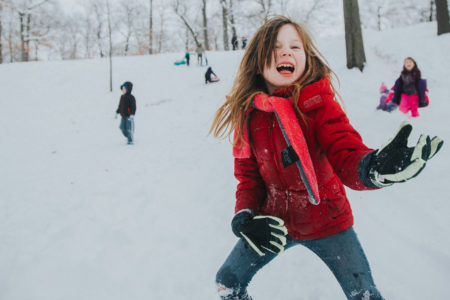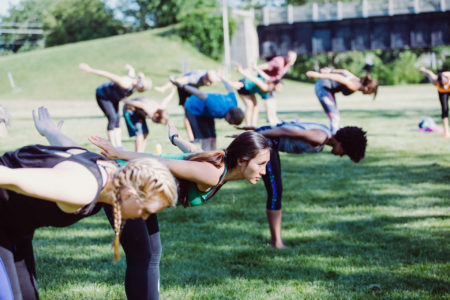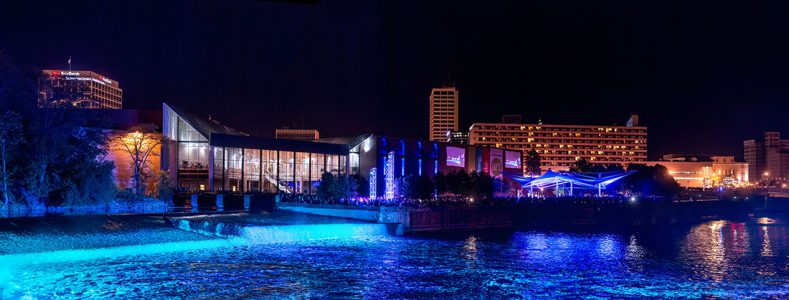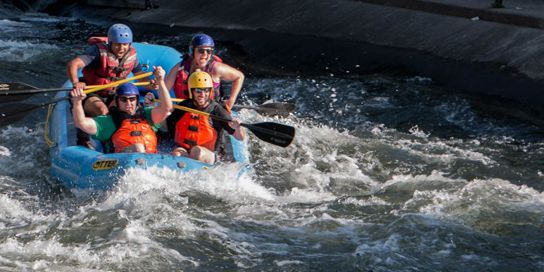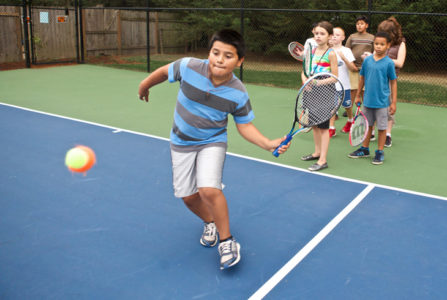Purpose Projects Your Voice FAQ News
My SB Parks and Trails is important for South Bend.
The list comes from the results of The City Plan, The Parks Master Plan, The Coal Line Trail Plan, Riverfront Parks and Trail Plan, and consults various neighborhood plans. These planning initiatives underwent hundreds of hours of community forums, neighborhood meetings, and focus groups.
The My SB Parks and Trails project list has been developed based on the feedback from the community, recommendations from the Park Score, and statistics from the National Recreation and Park Association. Please read more below on the positive impact that these projects, based on your feedback, will make in our community.
Health & Wellness
Parks and Trails are key factors in increasing physical activity, thereby preventing obesity and reducing the incidence of chronic medical conditions.7
Given the evidence linking physical activity and health, the most obvious way parks contribute to improving population health is by providing a venue for physical activity. More than just physical health, parks also improve public health by increasing social interaction, psychological health by reducing stress through exposure to nature. Finally, use of parks during daylight hours increases sun exposure, which is important for producing Vitamin D, necessary for bone health, and possibly for preventing a variety of health conditions, including asthma and heart disease.7
Community Health – 73% of adults believe parks, trails, and open space are an essential part of the healthcare system.9
Mental Health – People who lived in close proximity to natural space had significantly improved mental health up to three years after their move.9
Physical Health – Older adults engage in over 3.5 times more physical activity in parks with walking loops.9
Sustainability
Parks are key community stakeholders when it comes to addressing the effects of climate change. 8
Thoughtfully designed park systems solve many ecological problems. From protecting water resources via green infrastructure practices, to reducing urban heat island effect through city wide forest restoration – parks play a critical role in ensuring that our communities successfully adapt and thrive in light of a rapidly changing planet. However, park and recreation agencies’ sustainability activities not only focus on environmental benefits but also on public education and cost savings.8
Flood protection – Flooding is reduced through green infrastructure
Carbon sequestration – 1 acre of trees absorb the carbon dioxide produced by driving a car 11,000 miles.
Storm water retention – Philadelphia, PA saved 5.9 million in storm water management as a direct result of the city’s park system.10
Aesthetic – Green spaces protect the environment by improving air and water quality.
Society
Parks and open spaces cultivate community ties which produces public benefits by connecting people more deeply to the fabric of the community.
The importance of placemaking is a city have been widely documented. Residents of neighborhoods with greenery in common spaces are more likely to enjoy stronger social ties and enjoy lower crime rates. Improving the sense of identity in South Bend strengthens neighborhood vitalization, and provides increases cultural and event opportunities.
Social capital – Parks strengthen community ties and bring diverse populations together.
Recreation and play – The number of children who are physically active outside is 84% higher when schoolyards are kept open for public play.
Education – Children in summer camps at park and recreation sites report a 20% increase in fruit and vegetable knowledge.
Community safety – Programming and beautification efforts reduce incidents of crime and violence by 50%.
Economic Impact
Parks and Trails are engines of significant economic activity and job creation in the US.6
Park and recreation services are worth the average amount of tax revenues invested in them… if not more. Economic impacts include; enhanced property value (research shows that many people are willing to pay more to live near parks), and strengthening of the local economy through festivals and other revenue- generating activities.1 A positive economic impact benefits the entire community through attracting employers, increasing property value, and resident longevity.
Economic Development – local and regional public park agencies generated nearly $140 billion in economic activity and support almost 1 million jobs.6
Land Value – Homes near parks can sell for up to $2,262 more than homes without parks nearby.9
Talent Attraction – Quality of life in a community increases the attractiveness of a job by 33 percent.12
References:
1. City Plan
2. Parks & Rec Master Plan
3. Trust for Public Lands Park Score Summary
4. Trust for Public Lands – Access Maps
5. Riverfront Parks & Trail Plan
6. Coal Line Trail Plan
7. NRPA: The Economic Impact of Local Parks
8. NRPA: Quantifying the Contribution of Public Parks to Physical Activity and Health
9. NRPA: Park and Recreation Sustainability Practices
10. Active Living Research
11. How Much Value Does the City of Philadelphia Receive from its Park and Recreation System
12. Three Rivers Park: Economic Impact Analysis
13. American Planning Association: How Cities Use Parks for Economic Development
14. NRPA: Support for Parks
15. Natural Resource Management Plan

